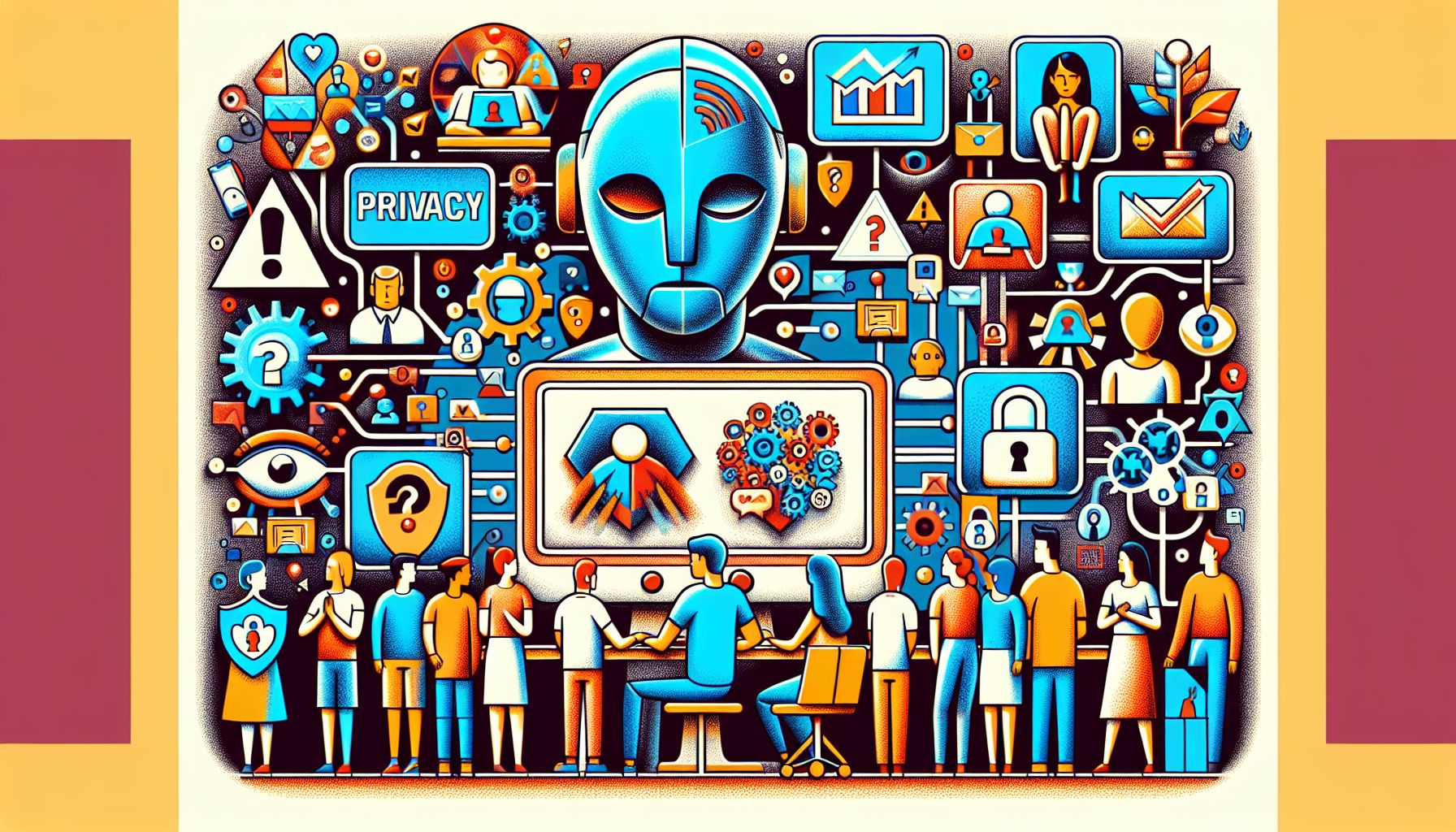📌 Let’s explore the topic in depth and see what insights we can uncover.
⚡ “Did you know your harmless-looking AI assistant could be your largest privacy risk? Brace yourself and let’s plunge into the intriguing world of privacy issues within generative AI systems.”
The Artificial Intelligence (AI) revolution is upon us. With its potential to mimic human intelligence and automate tasks, AI is transforming various sectors, from healthcare to finance to entertainment. One captivating subset of AI is generative AI systems. Imagine a system that could generate human-like text, create realistic images from descriptions, or even compose music. Exciting, isn’t it? 😃 But, like a double-edged sword, these capabilities also bring about significant privacy concerns that need our attention. In this blog post, we will put on our detective hats and delve into the hidden perils of privacy risks in generative AI systems. We will take a stroll through the fascinating yet sometimes eerie world of generative AI, discuss how these systems might pose a risk to our privacy, and conclude with some tips on how we can protect ourselves. So, buckle up for an exciting journey! 🚀
🎭 The Masquerade of Generative AI Systems

"Unmasking Hidden Dangers in AI's Private Realm"
Before we delve into the darker side of things, let’s first understand what generative AI systems are. Generative AI, a branch of machine learning, aims to create new data that resemble the original data. These systems can generate a variety of outputs such as images, music, and text, making them an exciting prospect in creative fields. Some popular examples include OpenAI’s GPT-3, a language model that can draft human-like text, and DeepArt, an AI that can turn photos into digital paintings. However, as these AI systems become more sophisticated, they also become masters of masquerade, potentially posing significant privacy risks.
👀 The Peeping Toms: Privacy Risks in Generative AI Systems
Generative AI systems can pose substantial privacy risks. Here are three primary ways they do so:
Data Leakage
Generative AI models are trained on massive amounts of data. If this data includes sensitive information, there’s a risk that the AI could inadvertently reveal it. For example, an AI trained on healthcare data could potentially generate outputs that reveal patients’ identities or medical conditions 🏥.
Impersonation
Generative AI systems can create realistic, human-like content, which can be used maliciously to impersonate individuals. For instance, deepfake technology can generate realistic videos of people saying things they never did, leading to serious privacy and reputational issues 😱.
Profiling and Discrimination
Generative AI can be used to infer sensitive information about individuals, leading to profiling. This could be used in harmful ways, such as discriminatory advertising or unfair pricing 💔.
🧩 The Puzzle Pieces: Case Studies of Privacy Risks
To better understand these risks, let’s look at some real-world examples:
Data Leakage in Generative Models
In 2020, OpenAI decided not to release the full GPT-2 model due to fears of misuse. One concern was that the model might memorize sensitive information during training and then reveal it during generation, a phenomenon known as data leakage.
Deepfakes and Impersonation
Deepfakes have been used to create convincing videos of politicians and celebrities saying or doing things they never did. This technology poses a serious threat to privacy as it can be used to defame individuals or spread misinformation.
Profiling and Discrimination
In 2016, ProPublica found that a software used by U.S. courts to predict recidivism was biased against Black defendants. 🔍 Interestingly, an example of how generative AI can be used to unfairly profile individuals and lead to discrimination.
🛡️ Safeguarding Your Privacy: Tips and Solutions
While these risks might seem daunting, there are ways to safeguard our privacy. Here are some tips:
Use Data Privacy Tools
Tools like differential privacy can help protect sensitive information during the AI training process. They add a layer of noise to the data, making it difficult for the AI to memorize specific details.
Regulate AI Systems
Governments and organizations should establish regulations to oversee the use of generative AI systems. This can help prevent misuse and protect individuals’ privacy rights.
Promote Transparency and Accountability
AI developers should make their systems transparent and accountable. This includes explaining how the AI works and being responsible for any negative consequences.
Educate Yourself
Stay informed about the latest developments in AI and privacy. Knowledge is power, and understanding these issues can help you protect your privacy.
🧭 Conclusion
Generative AI systems, with their ability to create human-like content, hold enormous potential. They can revolutionize countless sectors, from art to journalism to healthcare. But, like a master illusionist, these systems also harbour the risk of deceiving us and infringing on our privacy. By exploring the hidden alleys and understanding the potential risks, we can better prepare ourselves for this new world. We must remember that while AI is a powerful tool, it is just that—a tool. It’s up to us to wield it responsibly, and that includes respecting and protecting our privacy. As we continue to advance in the AI frontier, let’s ensure we do so with our eyes wide open, aware of the potential risks and equipped with the knowledge to safeguard our privacy. Because, as the saying goes, “With great power comes great responsibility.”
📡 The future is unfolding — don’t miss what’s next!
